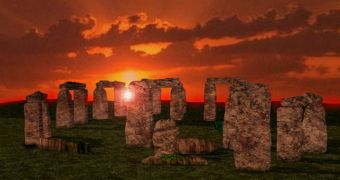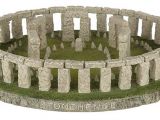Recent excavations conducted at the Stonehenge site, the first after 40 years, uncovered a series of pieces of evidence to the fact that pilgrims from all over Europe visited the monument for healing purposes.
Archaeologists Geoffrey Wainwright and Timothy Darvill based their conclusion on the fact that the skeletons in the nearby graves showed distinct proof of illness and injury, while the monument's stones were chipped on purpose, presumably in order to make amulets that would keep one away from illnesses. A further study of the skeletons collected from the surrounding area included analyzing their teeth, which pointed to the fact that nearly half of the people passing by Stonehenge were from outside its region.
As Darvill stated in a press conference held at London's Society of Antiquaries, "People were in a state of distress, if I can put it as politely as that, when they came to the Stonehenge monument." He mentioned that the researchers had unearthed two skulls that presented evidence of rudimentary surgery, some of only several such cases known in ancient Britain. "Even today, that's the pretty serious end of medicine," he added. In the same area, the skeletal remains of a man currently known as the Amesbury Archer were found. The skull had been severely damaged, as was the knee, and a more thorough analysis showed that he was coming from the Alps and that he died at the time when the monument was built, around 2300 B.C. (about 200 more recently than previously believed).
As adjacent proof to their claims, researchers quote Geoffrey of Monmouth, a monk who lived in the 12th century, as saying the stones were believed to possess some medicinal properties. Also, their digs proved that small pieces of the "healing" bluestones (which were carried from Pembrokeshire in Wales to Salisbury Plain in southern England in order to build the inner circle of Stonehenge) were still chipped off during the Roman Empire and the Middle Ages, and their owners were still buried with the amulets created from them. Another piece of evidence also lies within the local folklore, which holds even today some memory of the beneficial features of the monument. However, even if he and his team associated Stonehenge with a healing center, Darvill does not exclude the other possibilities that have been formulated to date. "It could have been a temple, even as it was a healing center," he explained.
While admitting to Darvill's discovery and theory, Andrew Fitzpatrick from the British heritage group Wessex Archaeology adds in an interview to BBC: "I don't think we can rule out the other main competing theory – that the temple was a meeting point between the land of the living and the dead." The enigmatic landmark is also believed to have represented a cemetery or an astronomical observatory. In any case, mystery still hangs above its shape and purpose, both of which have drawn people by the millions, from ancient history to modern times.

 14 DAY TRIAL //
14 DAY TRIAL // 
